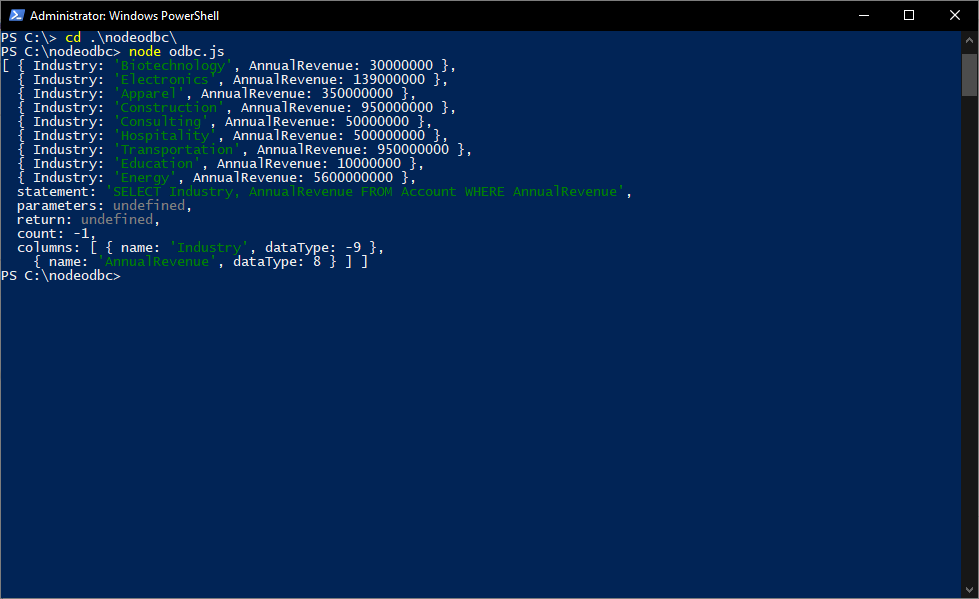Model Context Protocol (MCP) finally gives AI models a way to access the business data needed to make them really useful at work. CData MCP Servers have the depth and performance to make sure AI has access to all of the answers.
Try them now for free →Query Veeva Vault Data through ODBC in Node.js
Use node-odbc to execute SQL queries against Veeva Vault data from Node.js.
Node.js is a JavaScript runtime environment that allows you to run JavaScript code outside of a browser. With the CData ODBC Driver for Veeva, you can access live Veeva Vault data from Node.js apps and scripts. In this article, we walk through installing node-odbc and the required tools to create a simple Node.js app with access to live Veeva Vault data.
With built-in optimized data processing, the CData ODBC Driver offers unmatched performance for interacting with live Veeva Vault data in Node.js. When you issue complex SQL queries from Node.js to Veeva Vault, the driver pushes supported SQL operations, like filters and aggregations, directly to Veeva Vault and utilizes the embedded SQL engine to process unsupported operations client-side (often SQL functions and JOIN operations).
Connecting to Veeva Vault Data
If you have not already done so, provide values for the required connection properties in the data source name (DSN). You can use the built-in Microsoft ODBC Data Source Administrator to configure the DSN. This is also the last step of the driver installation. See the "Getting Started" chapter in the help documentation for a guide to using the Microsoft ODBC Data Source Administrator to create and configure a DSN.
You are ready to connect after specifying the following connection properties:
- Url: The host you see in the URL after you login to your account. For example: https://my-veeva-domain.veevavault.com
- User: The username you use to login to your account.
- Password: The password you use to login to your account.
Building node-odbc
In order to connect to Veeva Vault through the CData ODBC Driver, you need to build node-odbc manually (after installing the required tools).
Installing the Required Tools
The following commands install the tools required to build node-odbc (note the -g parameter, which installs the tools globally).
npm i -g windows-build-tools npm i -g node-gyp
Building node-odbc
After installing the required tools, create a directory for the Node.js app and install odbc (which builds the binary for us to use in our Node.js script).
mkdir nodeodbc cd nodeodbc npm i -g node
Querying Veeva Vault from Node.js
With the ODBC Driver installed, a DSN Configured, and node-odbc built, we are ready to query live Veeva Vault data from a Node.js app. The sample code below connects to a specific DSN and queries the NorthwindProducts table.
myscript.js
const odbc = require('odbc');
async function queryVeevaVault() {
const connection = await odbc.connect(`DSN=CData VeevaVault Source`);
const data = await connection.query('SELECT ProductId, ProductName FROM NorthwindProducts');
console.log(data);
}
queryVeevaVault();
Once you write the app, use node to execute the script:
node myscript.js

Download a free, 30-day trial of the CData ODBC Driver for Veeva and start working with your live Veeva Vault data in Node.js. Reach out to our Support Team if you have any questions.

